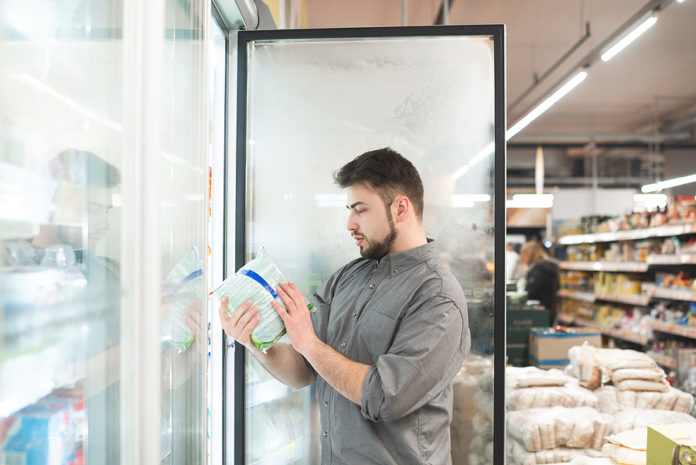
Total frozen food retail sales in 2020 were $65.1 billion, up 21% from 2019, according to the Power of Frozen 2021 from the American Frozen Food Institute and FMI—the Food Industry Association. Unit sales were up 13.3%, with most types of frozen foods increasing by double digits. The highest dollar sales growth, according to IRI data, was in seafood (+35.3%), poultry (+34.7%), and appetizers (+28.9%).
Online shopping contributed to this increase, with online dollar purchases of frozen food up 75% in 2020. The pandemic also saw the share of core frozen food consumers — those who eat frozen food daily or every few days — grow from 35% in 2018 to 39% in 2020. Core consumers are more likely than low-frequency consumers to purchase frozen foods for planned, specific occasions. The study also found that frozen food consumers are most likely to want “real” ingredients, freshness, and no artificial colors.
“Frozen is one of the biggest cooking trends to come out of the COVID-19 pandemic,” states Pandemic-Fueled Growth of Frozen Foods, a new report from Acosta. Not only did food companies benefit, so did freezer manufacturers — freezer sales were up 45% in 2020 as consumers needed more space to store purchases.
Acosta found the driver of increased sales was more purchases by existing frozen food buyers, not new buyers. The top five categories that benefited from additional purchases were:
- Fruits (up 31%)
- Vegetables (up 29%)
- Pizza (up 28%)
- Snacks (up 28%)
- Entrees (up 27%)
The top three food companies in fruits and vegetables were General Mills Inc., Conagra Brands, and McCain Foods, according to the Top 150 Frozen Foods Processors Report 2021 from Refrigerated & Frozen Foods. In both the meals and entrees category and the snacks, appetizers, and sides category, Tyson Foods Inc.; Nestlé, Zone Americas; and The Kraft Heinz Co. were the top processors. Tyson also topped the meat, poultry, and seafood category, followed by JBS USA and Cargill Protein.
Consumers are most commonly eat frozen foods for dinner, according to Acosta. Their survey of U.S. consumers found that 59% eat frozen food at dinner often or most of the time. In contrast, 41% eat frozen food for lunch often or most of the time and 38% eat it for breakfast often or most of the time. Consumers also increasingly combine frozen and fresh foods at meals.
Looking post-pandemic, Acosta’s survey found the three most important considerations for in-store shopping for frozen foods will be low prices (50%), product availability (45%), and variety (42%). However, priorities vary by generation. Promotions are important to 48% of Boomers versus 37% of total shoppers. Convenient options are important to 32% of Millennials and Gen Z, versus 25% of total shoppers.
One factor that could affect retail sales of frozen foods is restaurant reopenings. Currently, a report from Numerator, a data and tech company, lists frozen foods in the wait-and-see category.








